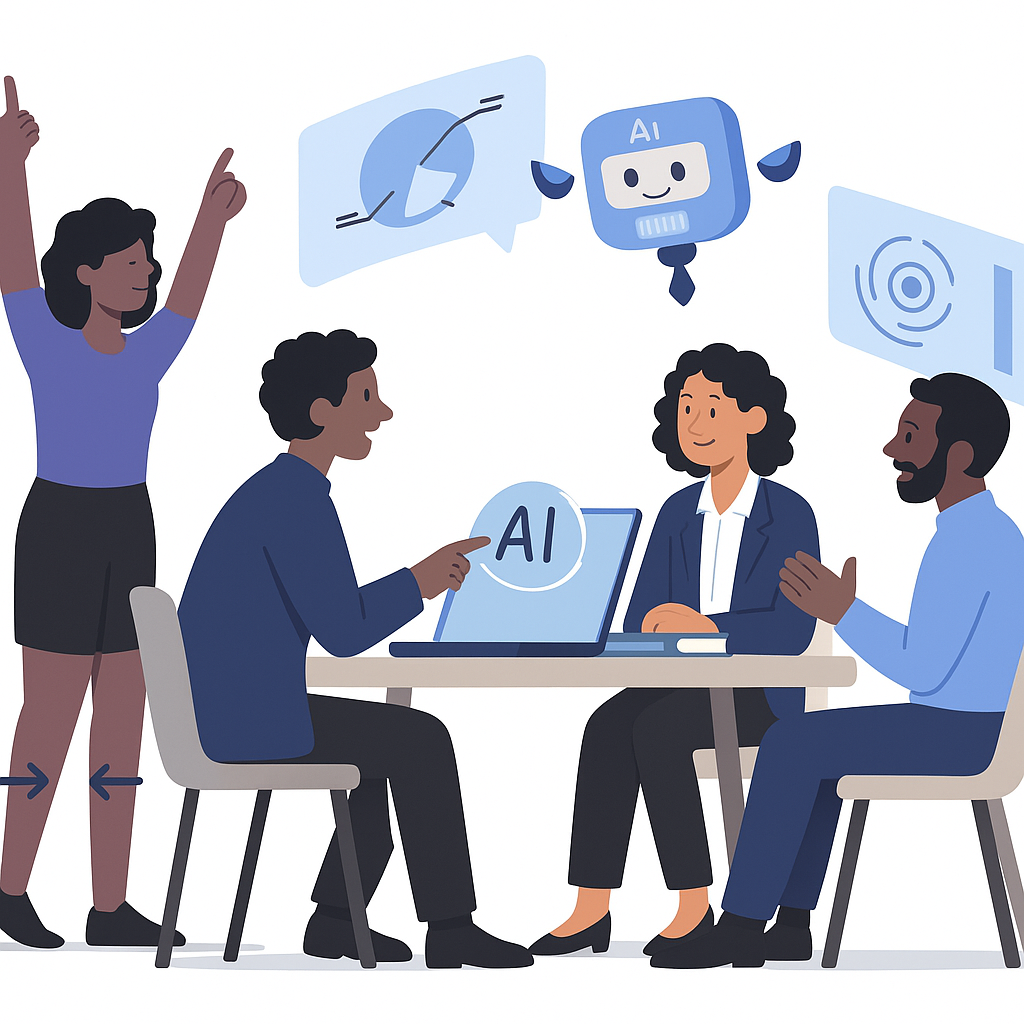In B2B SaaS, marketers often drown in data—too many segments, too many feature asks, too many priorities. One of our clients exemplified this: 47 confusing customer segments, 312 conflicting feature requests, and 15 competing strategic priorities. Clarity wasn’t in their numbers—it was buried beneath them.
By conducting interviews with just three ideal customers, we extracted three meaningful segments from the noise. That’s syntropy: turning chaos into clarity. This is how you make the abstract real—and how you build messaging that hits with precision.
Why Small, Focused Interviews Amplify Signal
-
Targeted voices, not volume: Three interviews from deeply engaged customers deliver more actionable insight than dozens of surface-level surveys. As one branding expert advises, choose quality over quantity—ten pristine insights beat fifty generic ones T2D3.
-
Behavior over data: Metrics can mislead. Real trajectories emerge when you listen for behavior, emotion, and motivation. Dig for stories and unique insights.
-
Narrative authority: You don’t just gather words; you capture patterns, language, and impact that define your positioning and narrative scaffolding.
The Three-Phase Interview Framework
Introduction
“Thank you for taking the time. My intent is simple: learn how our solution currently benefits your organization—and where we can get better. May I record this conversation? I’d like to focus fully on listening. If I later use any of our discussion for marketing, I’ll first share it with you for review. Some questions may feel repetitive—they’re intentional, designed to surface clarity. Does that sound reasonable?”
1. Customer Background (“Who?”)
-
“Tell me about your business—what makes your company unique? How's growth and your client base evolving?”
-
“Who are your clients, and what makes them special?”
-
“Tell me about your role. What does a typical day look like, and what pressures shape your decisions?”
2. Usage & Alternatives (“What?”)
-
“How long have you been partnered with our solution, and how do you describe the job we do for you?”
- Deploy the "Why & How" laddering technique. Why is this important for your customers? How is it that you do this that makes it special?
-
“What were you doing before using us?”
-
“How did you discover our solution—did you search online, ask peers? What other options did you evaluate? Why did you choose us in the end?”
3. Experience & Team Interaction (“Who do you work with?”)
-
“Who have you collaborated with on our side, and how has that working relationship been?”
-
“How do you view the quality of the work delivered? Have challenges arisen, and if so, how did we overcome them?”
4. Outcomes & Stories (“Impact & ROI”)
-
“What tangible benefits have you realized—productivity, ROI, morale, team dynamics?”
-
“Can you tell me a story that illustrates the impact of using our solution—something unique that happened or didn’t happen because of it?”
-
“When someone asks, ‘What has our solution done for you?’, what would you say?”
-
“Is there any area where you’d say we’re ‘best in class’ or even the only viable option?”
5. Personal Meaning (“What Does It Mean to You?”)
-
“What does using our solution mean to you, personally?”
-
“Looking back, what’s the most meaningful thing you’ve gained from this experience?”
-
“Can you recall the moment when things felt different—when clarity emerged?”
6. Reflection & Future (“What’s Next?”)
-
“What other benefits do you anticipate from our solution going forward?”
-
“Is there anything else you’d like us to know, or anything we can help you with?”
-
“Would you be open to another conversation if I need to clarify something? And may I share any quotes with you for approval before publishing?”
Why This Structure Wins at Creating Syntropy
-
Clarity with precision: Ideal customers surface clarity—not volume.
-
Narrative strength: Their authentic stories offer messaging that resonates deeply.
-
Rights and integrity built-in: Your framing, validation, and quote approval preserve message integrity and reduce decay.
-
Reusable insights: These interviews become strategic seeds—high leverage for messaging, content, and positioning.
-
Consistency across initiatives: When this process becomes part of your DNA, you consistently extract signal, not noise.
Embedding Syntropy in Your Marketing Workflow
To make this approach systemic:
-
Select 3–5 ideal customers—high value, high engagement, high clarity potential.
-
Run the three-phase framework—anchor your interviews in Who → What → How, enriched by depth-focused prompts.
-
Capture with rigor—transcribe, validate phrasing with the client, identify narrative themes.
-
Add clarity checkpoints—whenever a strategic decision or campaign is initiated, require alignment on narrative blocks derived from these interviews.
-
Measure outcomes—track how clarity translates into conversion, ROMI, messaging consistency, and retention.
